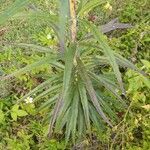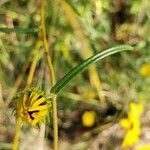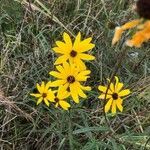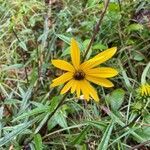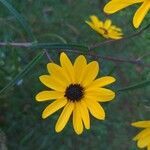Fibrous-rooted perennial with crown-buds, nearly or quite without rhizomes; stem solitary, 0.5–1.5(–2) m, ± hairy, especially below; lvs numerous, sessile or nearly so, commonly alternate except near the base, linear or nearly so and revolute-margined, mostly 5–15(–20) cm × 2–10(–15) mm and 10–30 times as long as wide, dark green and scabrous above, pale beneath with fine, loose, sometimes deciduous hairs, and often also atomiferous-glandular; petiolate basal lvs with broader blade sometimes present; disk red-purple (yellow), (1–)1.5–2 cm wide; invol bracts narrow, at least the inner with loose, narrow tip seldom surpassing the disk; rays (8–)10–15(–21), 1.5–3 cm; 2n=34. Swamps and moist places; L.I. to Fla. and Tex., chiefly near the coast in our range, but inland to s. O., s. Ind., and s. Mo. Aug.–Oct.
